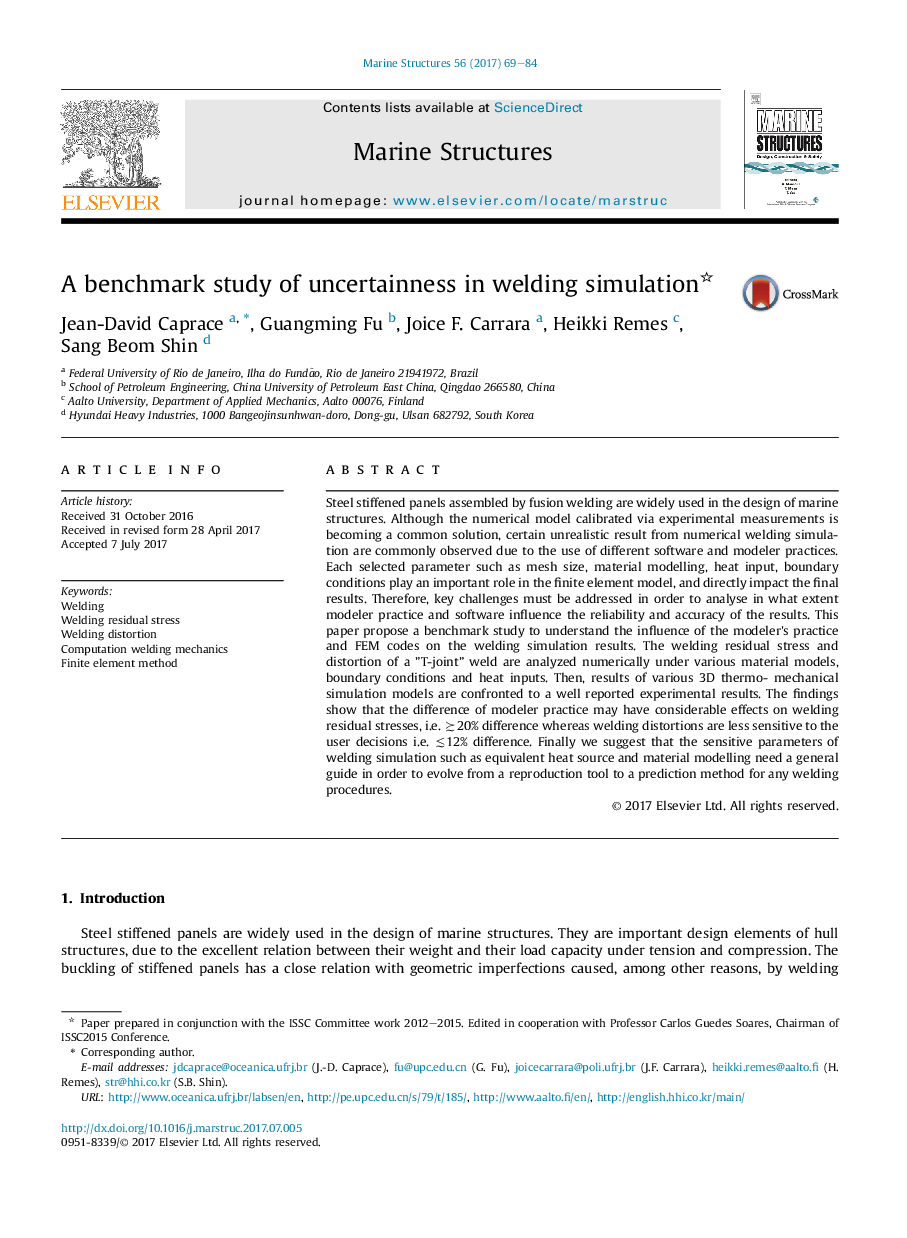ترجمه فارسی عنوان مقاله
یک مطالعه معیار عدم قطعیت در شبیه سازی جوشکاری
عنوان انگلیسی
A benchmark study of uncertainness in welding simulation
| کد مقاله | سال انتشار | تعداد صفحات مقاله انگلیسی |
|---|---|---|
| 95852 | 2017 | 16 صفحه PDF |
منبع

Publisher : Elsevier - Science Direct (الزویر - ساینس دایرکت)
Journal : Marine Structures, Volume 56, November 2017, Pages 69-84
ترجمه کلمات کلیدی
جوشکاری، استرس باقی مانده جوشکاری، اعوجاج جوش، مکانیک جوش محاسباتی، روش عنصر محدود
کلمات کلیدی انگلیسی
Welding; Welding residual stress; Welding distortion; Computation welding mechanics; Finite element method;

